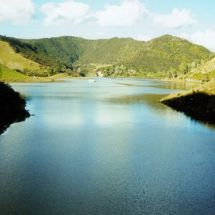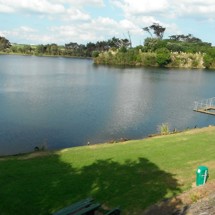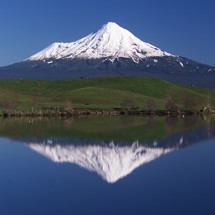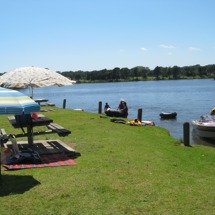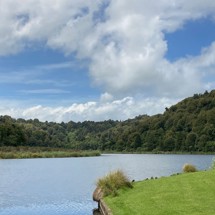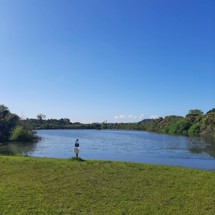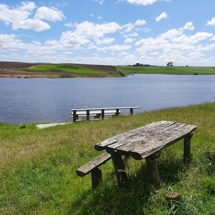Many of the lakes in the region are highly valued as wildlife reserves or for recreation - fishing, boating, water and jet-skiing and picnicking. Four of the region's main lakes, Lake Opunake, Lake Ratapiko, Lake Mangamahoe, and Lake Rotorangi, are artificially created hydro-generation storage lakes. Lake Rotorangi is the largest of these. Taranaki Regional Council monitors lake water quality at Lake Rotorangi annually. Monitoring for bacteria and cyanobacteria in relation to MfE contact recreation guidelines are conducted at Lake Rotomanu, Lake Ratapiko, Lake Opunake and Lake Rotokare (November - April).
A comprehensive annual freshwater bathing and recreational monitoring programme was implemented during the 1995-1996 summer as part of the State of the Environment monitoring programme for the Taranaki region. Four lakes Lake Rotomanu, Lake Opunake and Lake Ratapiko and Lake Rotokare, are included in the freshwater bathing programme. The programme has three objectives 1) to characterise the bacteriological and cyanobacterial quality to determine their suitability for contact recreation; 2) to identify changes in contact recreational bacteriological water quality over time; and 3) to assess water quality in relation to recreational water quality guidelines.
Lake water quality is monitored at Lake Rotorangi as part of consents originally granted to Egmont Electrivity Ltd (now transferred to TrustPower Ltd) for the Patea Dam. Lake Rotorangi was formed in May 1984 by the construction of a dam on the Patea River. Monitoring of lake water quality, lake water level and biological monitoring at Lake Rotorangi is undertaken as an annual state of the environment monitorng programme. Lake condition, in terms of lake productivity, continued to be within the category of mesotrophic to bordering mildly eutrophic (mildly nutrient enriched).

